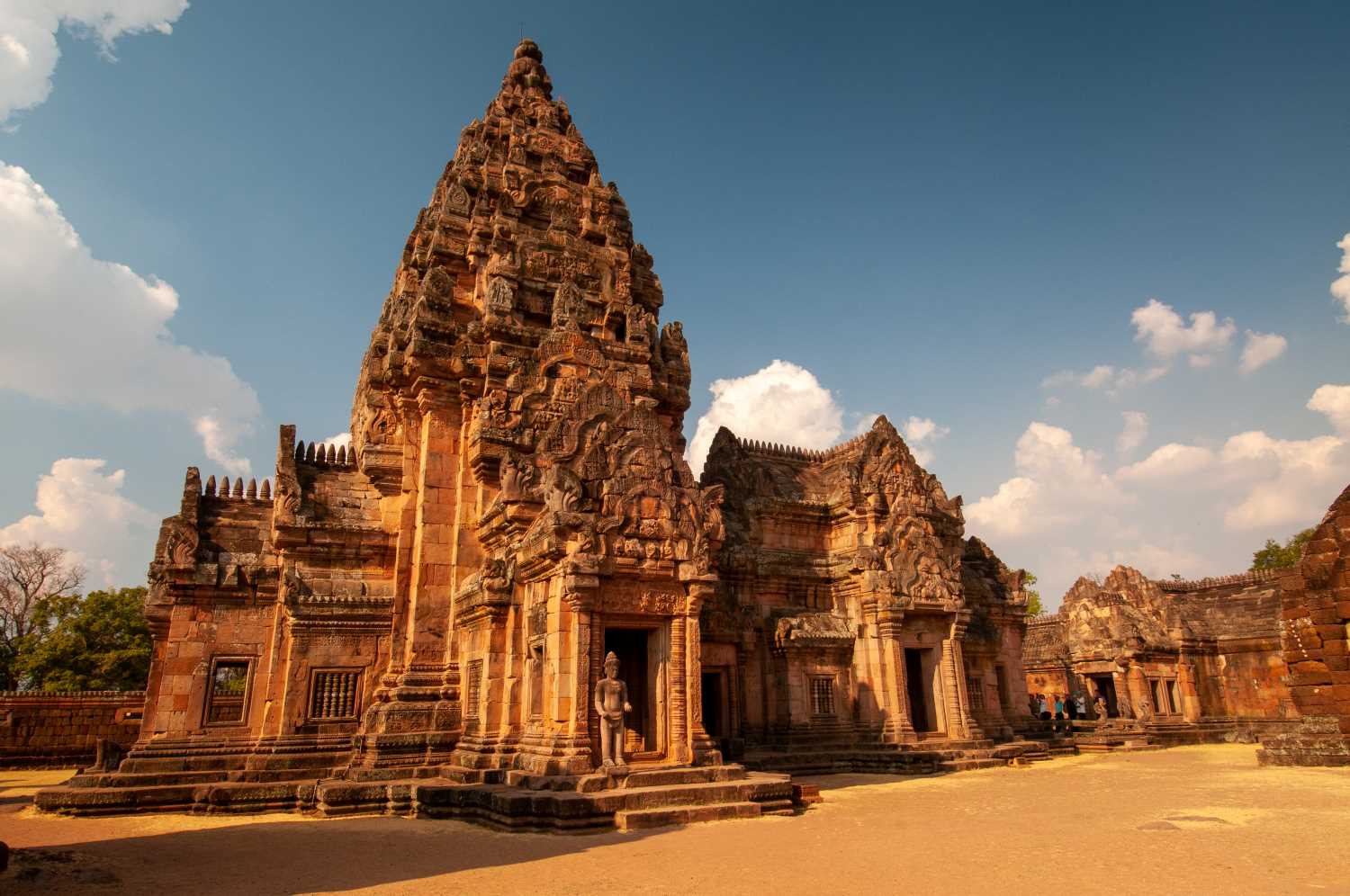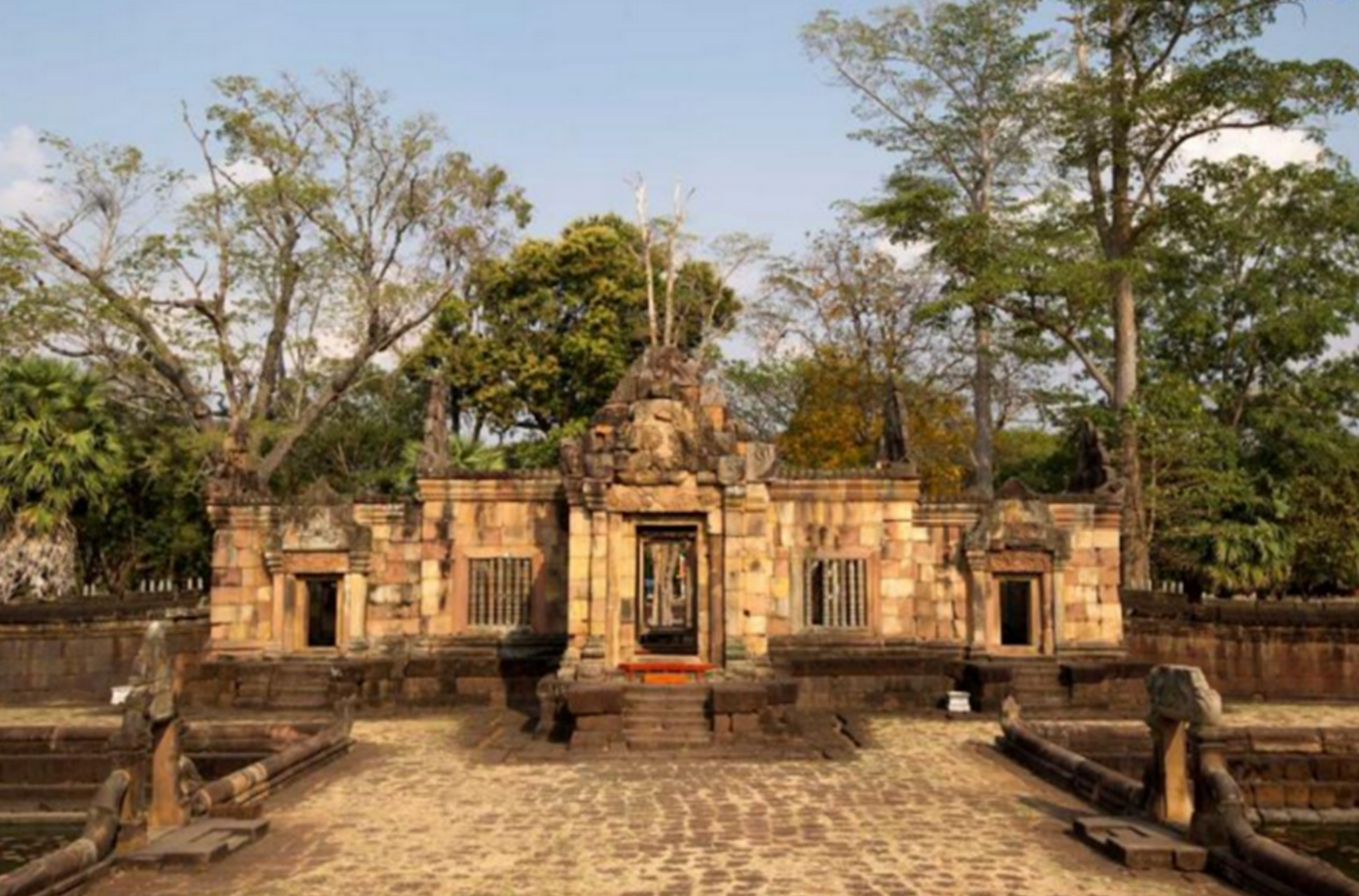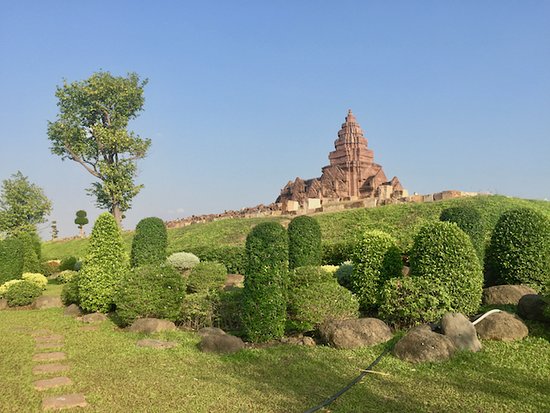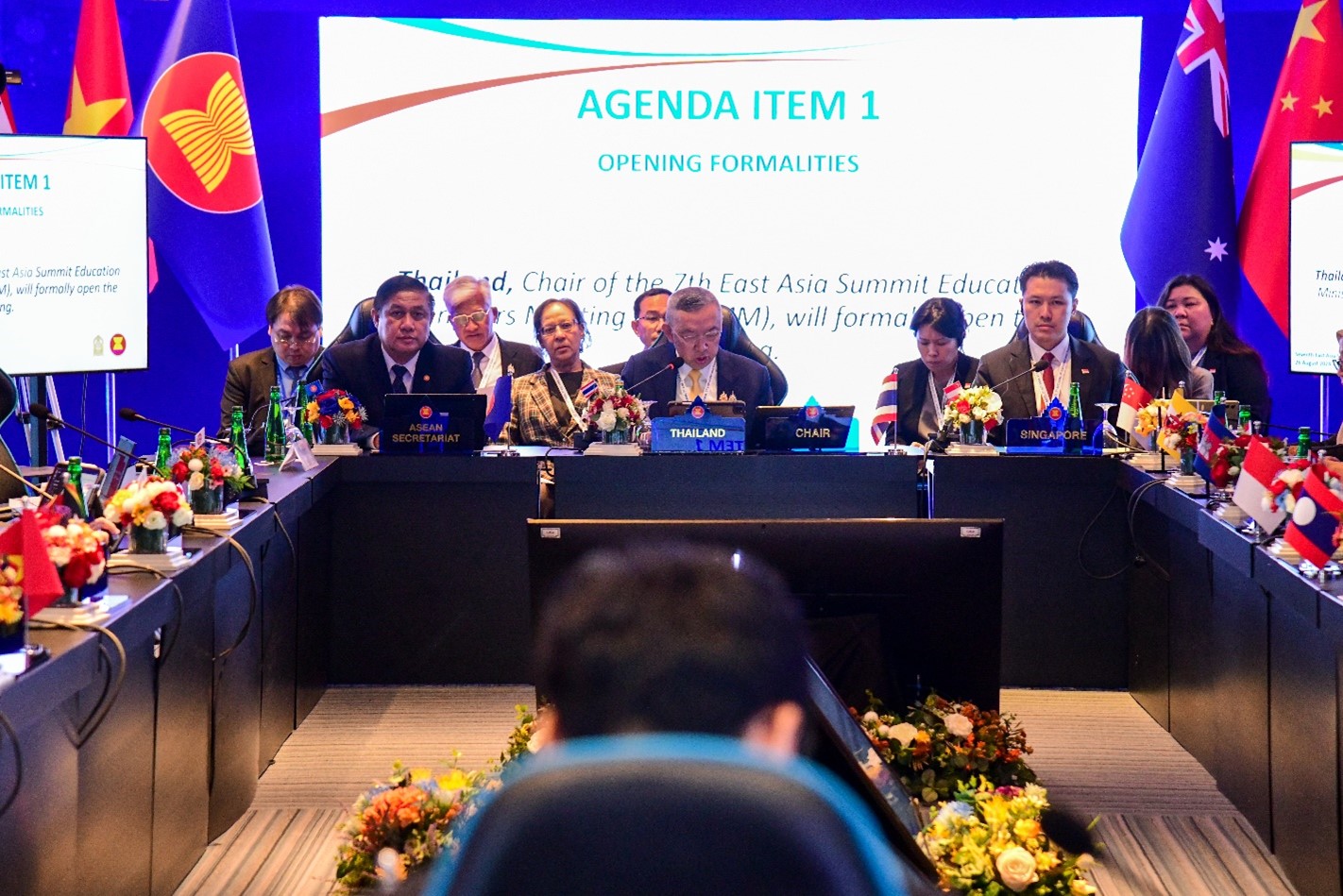
This is a grand and majestic Khmer site over a thousand years old. Built on an extinct volcano, it is originally a Hindu religious site and later became a Buddhist one. During the 15th-18th Buddhist century, several additions were made.
It is in Ban Tapek, Tambon Ta Pek. The park is one of the most beautiful and meaningful historical examples of Lop Buri art in Thailand. Prasat Hin Phanom Rung is located on top of an extinct volcano 350 meters above the sea level. The word “Phanom Rung” or “Vnam Rung” in the Khmer language means “a huge mountain.” This phrase appears in the Khmer inscription found at Prasat Hin Phanom Rung, also indicating the name of the castle’s builder, “Narendrathit,” a descendant of the Mahidharpur dynasty, who was a relative of King Suryavarman II, the builder of Angkor Wat. Prasat Hin Phanom Rung is dedicated to Lord Shiva, the Supreme God in Hinduism, as well as being a symbol of the center of the universe. The castle on the top of the hill and Prasat Hin Phanom Rung itself represent Mount Krailash, the residence of Lord Shiva. The sanctuary was built and renovated several times between the 10th and 13th centuries. The archaeological sites within Phanom Rung Historical Park consist of the following. The Lower Stairway of Prasat Hin Phanom Rung is made of laterite and features three landings that lead to a cross-shaped platform. The Pavilion is a rectangular hall, diagonally across from the cross-shaped platform to the north. The area is presumed to be where kings and nobilities purified themselves before entering the castle. The Walkway leads down from the cross-shaped platform to the Naga Bridge with 70 sandstone pillars, topped with lotus buds known as Sao Nang Riang, on both sides. The Naga Bridge on the 1st floor connects the walkway with the entrance leading up to the sanctuary. It is made of sandstone in the shape of a cross. The bridge’s railing depicts a five-headed serpent facing out in all four directions. In the middle part of the bridge, there are designs of carved, eight-petaled blooming lotus flowers, possibly referring to the eight directions of the universe. The Naga Bridge symbolizes the connection between the earth and heaven. The Upper Stairway leads up to the courtyard on the top of the hill. The spacious open-air Courtyard leads to the front of the cloister. The Naga Bridge on the 2nd floor is like the Naga Bridge on the 1st floor but with smaller dimensions. The Outer Courtyard and Terrace is an open laterite walkway with a low raised floor. The Entrance Gates and the Inner Terrace fronts before you enter the central tower, these surrounding terraces are constructed as a continual rectangular room – a central cloister equipped with an arch door or “Gopura” at all four exterior walls. The Naga Bridge on the 3rd floor connects the inner cloister’s central arch and the vihara in front of the main tower. The main sanctuary is the center of the inner temple, built from pink sandstone, with a recessed square layout with three extended porches. The rectangular sanctuary room dates to the 12th century while the inner sanctuaries are decorated with carvings of the Hindu Gods and the scenes from the epic Ramayana, Hindu religious stories, such as the Gable of Sivanatraj, Narai Banthomsin Lintel, Ramayana, and hermit images can also be found adorning the walls. Inside the elemental room, the “Khanpha Kharuha”, the place where a sacred lingam that symbolizes the strength of Lord Shiva is enshrined, can be found. Today, a pipe way used for holy water remains in place. Two Brick Sanctuaries assumed to date from around the 10th century are the oldest structures of Phanom Rung Mountain. A Minor Sanctuary or Prang Noi is located on the southwest side of the main tower. The front gable is carved in the image of Lord Krishna, lifting Khowattana mountain amidst foliage motifs. Inside Prang Noi, there is a sandstone pedestal base for the respected statue. The library “Bannalai,” established around the 13th century, is located in the southeast of the main tower and is the location where sacred Hindu scriptures were kept. On the northeast side of the main tower, there is a Laterite Building with only one door, containing no sacred figures. The actual usage of this construction is still unknown.





